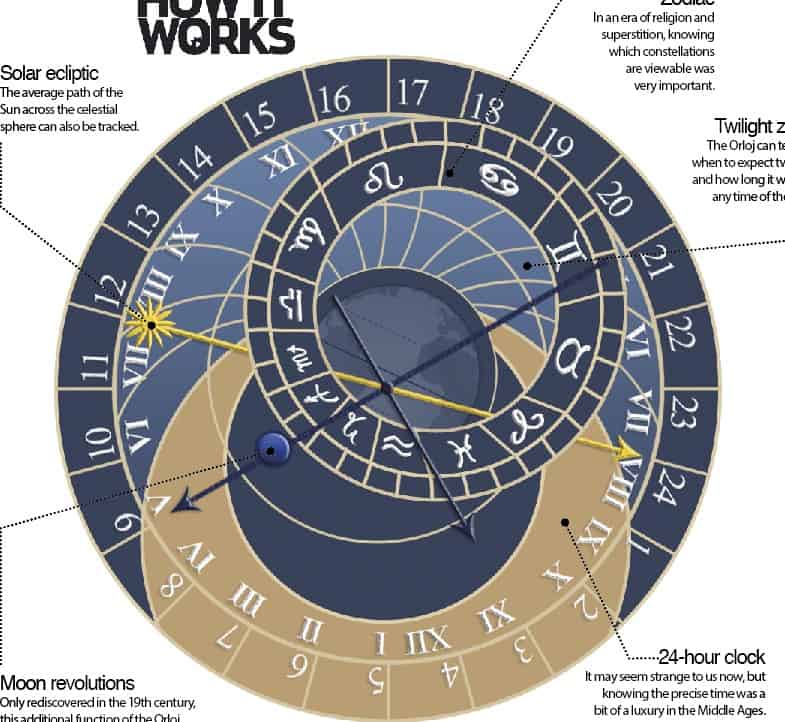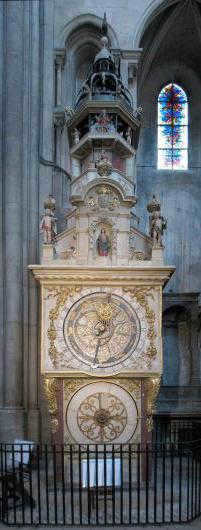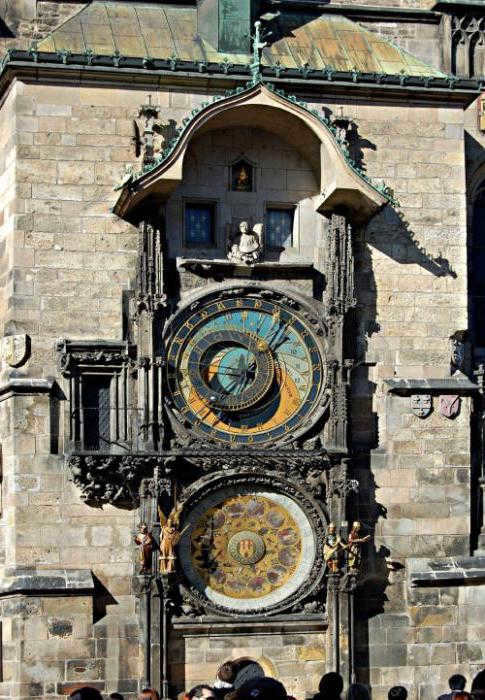Astronomical time refers to the measurement of time using celestial events and phenomena. It is a system that is based on the movements and positions of celestial bodies, such as the Sun, Moon, and stars.
The concept of astronomical time has been used by various civilizations throughout history to determine the passage of time and to create calendars. It is a way to track the cycles and patterns of celestial objects and to understand the rhythms of the universe.
One of the key components of astronomical time is the solar day, which is the time it takes for the Earth to complete one rotation on its axis relative to the Sun. This is the basis for the 24-hour day that is commonly used today.
Another important aspect of astronomical time is the lunar month, which is the time it takes for the Moon to complete one orbit around the Earth. This is the basis for the lunar calendar, which is used in many religious and cultural traditions.
Additionally, astronomical time takes into account the movements of other celestial bodies, such as planets and comets. These movements can be used to predict astronomical events, such as eclipses and meteor showers.
Overall, astronomical time provides a way to understand and appreciate the vastness and beauty of the universe. It allows us to connect with the celestial objects that surround us and to navigate the cycles and rhythms of the cosmos.
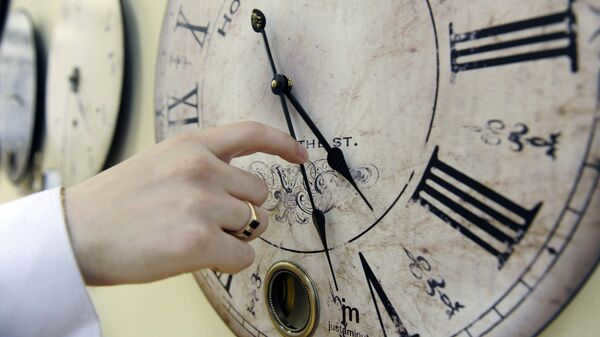
The State Duma has received a proposal to reintroduce winter time in Russia. “By passing this proposal, Russians will start living in accordance with astronomical time, which is aligned with nature…” stated Sergey Kalashnikov, the head of the Duma Committee on Health Protection and one of the bill’s authors.
If this bill becomes law, it raises questions about the type of time that will be observed in Russia and whether it will be convenient for us to adapt to natural time after nearly a century of following an artificial time system. These are important considerations for us all.
We have the opportunity to do this. The chance to bring us back to natural time will only arise in the autumn of this year. The contracts that have been signed for the broadcasting of the Sochi Olympics prevent us from doing it earlier, and the closest transfer of hands can only occur in the autumn.
Returning to nature
According to the legislation, Moscow time will be “equivalent to the national time scale of the Russian Federation, which corresponds to UTC + three hours”. In simpler terms, the clock in Moscow will be set back by one hour.
As a result, during the winter, the time in Moscow will be three hours ahead of London time and two hours ahead of the average European time. And during the summer, when the UK and the EU switch to daylight saving time, this difference will be reduced to two hours (with London) and one hour (with the EU), respectively.
We will no longer have seasonal time transfers, as they are prohibited by the bill, so our time will always be…no, not “winter” time. Such a characterization would go against the essence of the completely new “deputy” time.
The elected representatives of the people intend to bring us back to not “winter time”, but to the natural, organic, astronomical time. In other words, the type of time that should be observed in Moscow, which is situated 37°37′ east of London, or more specifically, in one of the boroughs of London known as Greenwich, where the prime meridian of the Earth passes.
Thirty minutes before sunrise
In Moscow, the sun rises 2.5 hours earlier than in Greenwich, and currently Moscow time is 4 hours ahead of Greenwich time. This means that Muscovites will wake up one and a half hours earlier than the actual time.
According to the proposed legislation, the clocks will be set back by one hour. This means that people will wake up half an hour earlier than the astronomically appropriate moment. It is still a bit early, but it would be inconvenient to set the clocks back by an hour and a half for many reasons. Primarily, it would be challenging to calculate the time difference, whereas subtracting one hour from the European average or two hours from London time is much simpler.
![]()
![]()
There has been much discussion on the reasons behind adjusting our clocks to daylight saving time (in 1917), summer and winter time (1981), permanent summer time (2011), and the impact on the country’s economy and its citizens’ health. It seems unnecessary to reiterate what has already been said. Both proponents and opponents of the time shift have expressed their views extensively. There is nothing new to be added.
The question at hand is whether it will be convenient for us to adhere to natural astronomical time.
The bill proposed by the deputies aims to address the issue of time zones in Russia, which currently limits the ability to adjust the clocks and has caused confusion. Under the current law, there are only 9 time zones, but in reality, there are 12 natural time zones in the country. This discrepancy has led to the sun not setting for exactly half of the day, causing inconvenience for many Russians.
The bill seeks to rectify this situation by allowing for more flexibility in adjusting the clocks. It aims to bring back the joy of waking up on time for all Russians, ensuring that they can have a more accurate representation of daylight hours. This change would also help to align Russia’s time zones with the natural astronomical time zones, improving efficiency and reducing confusion.
A stunning desire, possibly even excessively stunning to occur without any difficulties. As human experience has demonstrated, nobody has ever succeeded in pleasing everyone simultaneously. It is improbable to achieve success in this instance.
The narrative regarding geography
It is evident that when endorsing the legislation concerning the alteration of time zone numbers and boundaries, Dmitry Medvedev had the least intention of complicating the lives of the citizens. He, or rather, the professionals who devised the legislation that he endorsed, faced an extremely challenging task. They had to discover a middle ground between the limits of astronomical time zones, which adhere to the straight lines of the Earth’s meridians, and the administrative boundaries of the federation subdivisions, which have historically evolved and hence possess highly intricate configurations.
Consequently, they effectively managed to incorporate the greatest number of federal subjects into the fewest time zones. This was crucial for synchronizing economic activities within the region and everyday life, including television programs. Otherwise, for instance, a portion of the Tyumen region would have to follow Sverdlovsk time while another part of Bashkortostan would adhere to Samara time (or vice versa). The exception to this arrangement was Yakutia, which was too large and thus maintained three time zones.
If one carefully reads the proposed bill, it becomes evident that they are suggesting the creation of 10 time zones, not the 12 required by astronomy. This means that there would only be one additional time zone compared to the current system. Therefore, according to their legislation, not all Russians will once again wake up in accordance with astronomical time.
Boundaries of Time
Living in complete harmony with the natural rhythm of time may have only been possible in prehistoric times. The sun would rise, signaling the awakening of people who would then embark on their mammoth hunting expeditions. When the sun set, they would retire for the night.
Unfortunately, such an idyllic lifestyle is no longer feasible, especially considering the need to coordinate time among a large number of individuals across vast territories. Without a common understanding of time, people would show up for work whenever they felt like it, and no one would know when to tune in for a soccer match.
This is why a compromise between natural time and the societal standard time is necessary. Throughout history, there have been ongoing efforts to find and establish such a compromise, and these efforts will continue for the foreseeable future. The recent parliamentary initiative represents yet another attempt at striking this balance. Now, we must assess its convenience for each individual and for the overall well-being of the state.

Throughout history, individuals have always been concerned with monitoring the passage of time. They consider it when scheduling appointments and organizing their tasks. The astronomical hour and the academic hour are frequently considered when managing time, and these concepts are legally defined to facilitate the convenience of the country’s citizens.
Timekeeping is derived from the Sumerians’ use of the duodecimal system. Throughout history, clocks have been divided into minutes. It is worth considering the hexadecimal system of calculation as well. The amalgamation of these two systems, duodecimal and hexadecimal, determines the efficacy of time management.
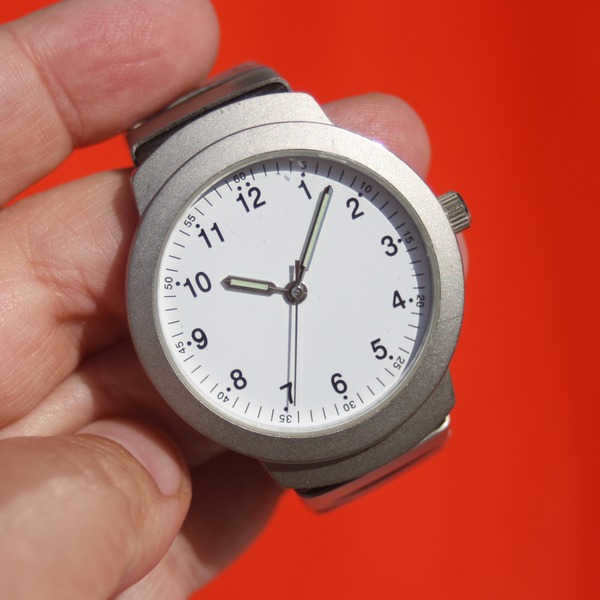
The length of an hour varied depending on the time of day and season. Eventually, it was decided to divide the day into two equal parts: day and night. The method of time calculation gradually changed over time. For instance, during the Middle Ages, European countries took into account church services. The duration of an hour remained inconsistent for several centuries, but now the system includes several terms that are familiar to everyone and can be accurately translated into hours when needed. In Russia, as early as the 16th and 17th centuries, the hour’s duration remained constant, while the length of day and night varied with the seasons. After 1722, the timekeeping system became similar to the modern one.
Understanding of Definitions
- Academic hour – The smallest unit of academic time measurement;
- A pair consists of two academic hours (in accordance with this system, education is structured in universities).
It is important to keep in mind these defined values to accurately convert astronomical hours into academic hours.
Characteristics of the celestial hour
Even a young person should be familiar with the concept of a celestial hour, as it serves as the foundation for modern time measurement.
In this instance, an hour always consists of 60 minutes.
Life circumstances, plans, and commitments are intertwined with the available time, making it easier to address matters if you are aware of the current time. It is advisable to invest in a dependable stainless steel wristwatch, which provides accurate timekeeping and enables you to meticulously monitor the passage of time for effective organization of social and personal affairs.

An astronomical hour is a designated time period that is always equivalent to 60 minutes or 3600 seconds. However, it is important to note that the unit of time is not officially recognized within the International System of Units. While the duration of an astronomical hour remains consistent worldwide, it does not adhere to the decimal notation commonly employed.
Academic hour information
The length of the academic hour is subject to variation. It consistently signifies a time period and represents the duration of an academic session. The value is established for educational establishments, taking into consideration diverse factors for individuals of varying age groups.
In kindergarten settings, educators consistently reduce the length, while schools adhere to the standard duration. In universities, academic hours are referred to as “pairs.”
Due to the difference in attention span, a special scheme is used to translate the two values, academ and astronomical hour, in each situation. This is because young children are unable to absorb information for extended periods of time. Ignoring the concentration of attention can lead to fatigue in children and teenagers, making it difficult for them to absorb the educational material effectively. Therefore, it is necessary for academic hour indicators to vary in educational institutions.
Prior to 2014, the duration was determined by the statutes of educational institutions and was limited to 45-50 minutes. Currently, kindergartens, schools, and universities have the autonomy to decide the duration of the hour, taking local documents into consideration.
Pairing in Universities
In universities, it is common practice for two academic hours to be combined, a practice known as “pairing”. However, there is no legislative requirement for this.

Simultaneously, it is essential to be aware of the duration of classes in universities and colleges beyond Russia and the CIS. Typically, classes are divided into two parts, each lasting 60 minutes, with a 15-minute break in between. This schedule is believed to enhance the effective absorption of information by the students, as it allows for sufficient time for rest and rejuvenation.
Length of School Lessons
The duration of lessons in Russian schools can vary.
Most classes have a duration of no more than 45 minutes. Typically, one academic hour is equivalent to exactly 45 minutes. However, some schools may have different time values based on their specific requirements (specific documentation is implemented for this purpose).
Preschools
Preschool students will have a limited amount of time dedicated to their classes, as the schedule is designed to accommodate their need for rest after their afternoon nap. The duration of each lesson will be brief, with the lessons taking place in the second half of the day. Here is the breakdown of the lesson lengths:
Due to the young age of the children, it is important to provide them with regular breaks to maintain their focus and facilitate their learning process. Therefore, the lessons will not be too lengthy.

In the modern era, citizens place great value on time. Time is intricately linked to plans, schedules, and lesson planning in educational institutions.
The majority of individuals are familiar with the concept of the astronomical hour. It consists of 60 minutes and serves as a reliable means of navigating society. On the other hand, the academic hour is specifically designated for educational institutions, aiding in lesson planning and documentation.
Time is a concept that poses significant challenges in both philosophy and physics. It can be defined as a fundamental element necessary for any form of change to occur. Throughout history, humans have recognized the importance of understanding the passage of time. Initially, people measured time in larger intervals such as years, months, and days. However, they soon realized that time was slipping away, marked by sunrises, sunsets, the changing of seasons, and their own aging. This led to the need for measuring shorter intervals, resulting in the development of hours, minutes, and seconds. As human civilization progressed and activities became more intricate, the methods of measuring time became more refined. Each interval acquired a more precise meaning. From the atomic and fleeting second to the astronomical hour (which I’ll address later), time became increasingly quantifiable. Today, the hour remains the most commonly used unit of time in our daily lives. It is an essential component of modern society, symbolized by the ubiquitous presence of clocks.
A Glimpse into the Past
It is evident that the method of time calculation used in ancient times differed greatly from the counting system we employ today. The Sumerians, an ancient civilization, utilized the duodecimal system as the basis for their time measurement. This system, which divided a day into twelve parts, has its roots in the distant past. Furthermore, the division of an hour into minutes was also derived from an ancient number system known as hexadecimal, which was developed in the Tigris and Euphrates valleys.
The concept of dividing a day into 24 hours was first introduced by the Egyptians. However, during that time, the duration of an hour varied depending on the season and whether it was daytime or nighttime. Both the Egyptians and Babylonians divided the day into two equal halves, with each half consisting of 12 hours. Consequently, the length of an hour would fluctuate within each half, depending on the time of year.
There were comparable systems in Greece and Rome. During the Middle Ages throughout Europe, the day was partitioned based on religious activities.
The Greeks were the pioneers in utilizing the expression “now”. Varied lengths of time intervals have been maintained worldwide for an extended period. In our nation, during the XVI-XVII centuries, the length of one hour remained constant, but the number of hours in a day and night varied depending on the season. In Russia, time began to be measured similarly to Europe after 1722.
How long is an astronomical hour?
When we talk about an “hour,” we usually mean a period of time that is approximately 60 minutes long. We often use this term to describe various time intervals, such as a quiet hour or curfew. However, these intervals can sometimes be slightly shorter or longer than the usual 60 minutes. In some cases, the term “hour” may not even refer to an interval, but rather the specific moment in the day when a process must end and another must begin.
What is the duration of the lesson?
The length of the lesson can vary depending on different factors, such as the age group being taught. In academic settings, the duration of the lesson is not the same for all age groups. For instance, when working with young children in kindergartens, educators typically shorten the academic hour to about 20-30 minutes. However, as children get closer to graduation, the duration of the lesson may increase to around 40 minutes. On the other hand, in schools, classes usually last for 40-45 minutes, while in university settings, pairs can extend up to 90 minutes.
These differences in duration are based on the students’ ability to concentrate, which tends to improve with age. If the same 45-minute lesson used in kindergarten were implemented in school, students would likely become excessively tired and struggle to retain and learn the necessary information.
Calculating time in minutes
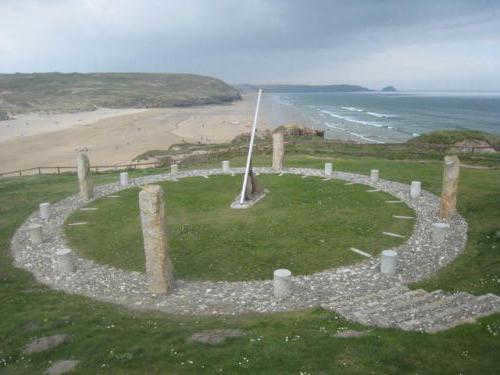
The concept of time is closely associated with the methods we use to perceive its passage. The invention of clocks came about when people first felt the necessity to measure intervals smaller than a day. The precise origin of clocks cannot be determined as it dates back to a very distant time. Initially, time was measured by observing the movement of the sun across the sky and the flow of water. Clocks were also constructed using sand and fire.
As knowledge advanced and the pace of life accelerated, more precise timekeeping devices were required. Sand, fire, and water clocks underwent improvements and complexities, eventually being replaced by mechanical timekeepers.
Gears, springs, and pendulums
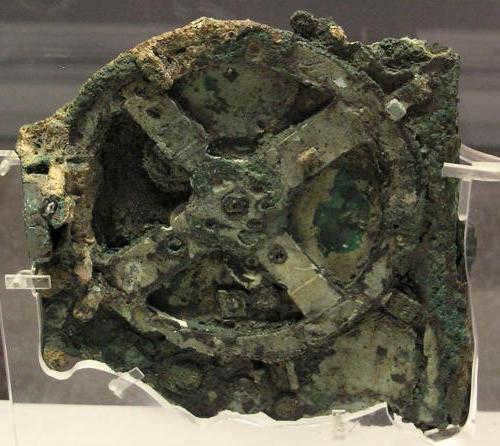
The seabed near the island of Antikythera is home to the oldest mechanical clocks ever discovered, dating back to 100 BC. These clocks, known as the Antikythera chimes, are truly one-of-a-kind, with a complex design that sets them apart from anything found in Hellenic culture. Reconstructed models suggest that the mechanism consisted of 32 gears, allowing it to display the passage of days, the movement of the Sun and the Moon, and even the signs of the zodiac. The project may have also included a simulation of the movements of Venus, Mars, Mercury, and Jupiter across the sky.
The escapement clock made its first appearance in China in 725, and shortly after, in 1000, Germany introduced the use of pendulums in clocks. In 1288, Westminster built the first clock tower in Western Europe.
The accuracy of time measurement mechanisms improved significantly over time, necessitating exceptional craftsmanship. In Europe during the Middle Ages and the Renaissance, magnificent astronomical clocks were crafted to perfection, leaving a lasting impression on the world.
An exquisite creation from Lyon
The Cathedral of Saint-Jean in Lyon, France, is home to the oldest operational astronomical clocks in the country. These remarkable timepieces date back to the 14th century and have a rich history. After being destroyed, they were painstakingly restored between 1572 and 1600 and adorned with Baroque decorations in 1655. Originally, like many clocks of their time, they only had an hour hand. It wasn’t until the 18th century that a minute dial was added.
Pride of Prague
Prague’s Source of Pride
The city of Prague is known for its rich history, stunning architecture, and vibrant culture. However, one of its most treasured assets is its residents. The people of Prague take great pride in their city and are known for their hospitality and warmth.
Prague’s residents, often referred to as Praguers, are passionate about their city and its heritage. They take pride in preserving its historical sites and traditions, ensuring that future generations can continue to enjoy them. Whether it’s the iconic Prague Castle, the charming Old Town Square, or the famous Charles Bridge, Praguers are dedicated to maintaining these landmarks and sharing their beauty with visitors.
But it’s not just the physical aspects of Prague that Praguers are proud of. They also take great pride in their cultural scene, which is a vibrant mix of art, music, theater, and literature. The city is home to numerous museums, galleries, and theaters, showcasing both traditional and contemporary works. Praguers actively support local artists and performers, attending exhibitions, concerts, and shows to celebrate their talent.
Another source of pride for Praguers is their cuisine. Czech cuisine is known for its hearty and delicious dishes, and Prague is no exception. From traditional favorites like goulash and svíčková to sweet treats like trdelník and koláče, Praguers take great pleasure in their local food. They often gather with friends and family to enjoy a meal together, sharing stories and laughter over a table filled with delicious Czech delicacies.
Overall, the people of Prague are the city’s pride and joy. Their dedication to preserving its history, celebrating its culture, and enjoying its cuisine make them an essential part of what makes Prague so special. With their warm hospitality and passion for their city, Praguers ensure that every visitor feels welcome and leaves with lasting memories.
The renowned Orlov Chimes, situated atop the Prague City Hall tower, have gained global recognition. Their captivating history is nothing short of dramatic. These enchanting timepieces were crafted by Orla over six centuries ago, in 1402, and commenced their operation shortly after, in 1410. Recognized as the “fathers” of these remarkable clocks are the eminent astronomer Jan Schindel and the skilled artisan Mikuláš of Kadan.
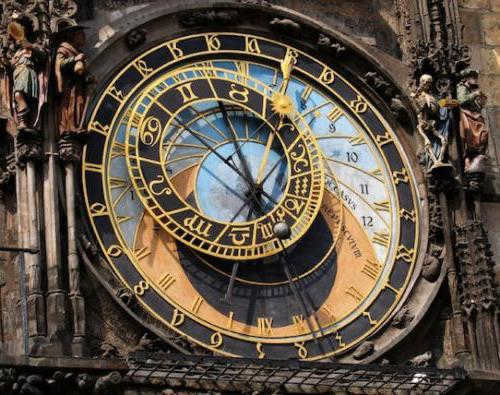
There were multiple instances where the town hall’s decoration required repairs. In 1490, Hanuš of Ruž made alterations to the mechanism and, as the legend goes, was subsequently blinded on the orders of the Prague authorities to prevent him from duplicating his creation. Concurrently, the clock was adorned with figurative representations and equipped with calendar disks.


In 1865, the design underwent notable modifications. Josef Manes incorporated a calendar dial in the shape of an eagle, featuring medallions adorned with symbolic depictions of the months and the zodiac signs. The golden rooster, which made its appearance once the figures completed their movement, was added to the clock in 1882.
Eagle in the Modern World
The Prague clock is truly remarkable, not only for its stunning beauty, but also for the extraordinary skill of the craftsmen who brought it to life. The Orloj showcases various timekeeping methods from different eras, including the Old Bohemian, Babylonian, Star, and Italian systems, as well as the current time. Additionally, the clock provides information about the date, the position of the Earth, and the zodiac signs. It even indicates the sunrise and sunset times, as well as the phases of the moon. Every hour, the animated figures on the clock, including the majestic eagle, come to life, offering insights into human vices and reminding us of the eternal nature of our existence.
The Strasbourg Cathedral’s astronomical clocks were ultimately finished in 1857. The previous versions were put in place in 1354 and 1574. The clock’s particularity lies in its capacity to compute the ongoing dates of religious festivities, as well as in the mechanism that displays the earth’s axis precession. Its full rotation is accomplished in over 25,000 years. The Strasbourg clock exhibits local and solar time, the trajectories of the Earth, the Moon, and the planets from Mercury to Saturn.
This list is in no way exhaustive when it comes to the masterpieces adorning different cities around the globe. Even a single hour, equivalent to 60 minutes, would not suffice to describe all the intricacies of the mechanisms and enchanting embellishments found in these creations. Nevertheless, there is no need for such an exhaustive account – these masterpieces, which embody a blend of knowledge, expertise, mathematical precision, and artistic inspiration, are best experienced firsthand.
Related notes:
Astronomical time refers to the time determined by the change in the hour angle of the Sun. The hour angle is measured along the Earth’s equator, ranging from 0 to 360 degrees. Each 150 degrees corresponds to one hour. Therefore, true solar time is determined by the motion of the Sun around the Earth. This concept is explained in detail in the Technical Translator’s Handbook.
Astronomical time in the context of metrology is defined as the time determined by periodic astronomical observations of celestial bodies. This definition is provided in the Penkiakalbis aiškinamasis metrologijos terminų žodynas.
Time is a concept that enables us to determine the occurrence of an event in relation to other events. It allows us to calculate the time difference in seconds, minutes, hours, days, months, years, or centuries between two events. The measurement of time plays a crucial role in various fields, including science, history, and everyday life. Understanding the concept of time helps us organize our activities and make sense of the world around us.
Time is a fascinating word, except for its irregular and unattractive form that has become widely accepted in the English language. The phrase “How much time?” highlights one of the grammatical challenges. In Russian grammar, the genitive case is required after the phrase “how much.” However, the form of the genitive case in this context is often debated among language enthusiasts. It is a topic often discussed in the Dictionary of Russian Language Errors, reflecting the ongoing evolution of language.
Time – TIME, as a concept, represents the objective measure, sequence, and trajectory of events, as well as personal perspectives on change and life experiences (temporality). Objective time is commonly understood as a continuum of moments that unfold in a specific order and direction. It is extensively explored in the Encyclopedia of Epistemology and Philosophy of Science.
Time – (derived from st.slav. – to spin) – refers to the duration and persistence of various phenomena. It encompasses different aspects such as astronomical time (measured by the Earth’s rotation around its axis), true time (measured by the actual time of day), and more. These distinctions are elaborated upon in the Fundamentals of Spiritual Culture (Educator’s Encyclopedic Dictionary).
Astronomical time (clock time) – denotes the duration of specific events measured through objective research methodologies. Further insights into this concept can be found in the Encyclopedic Dictionary of Psychology and Pedagogy.
Ephemeral time – Ephemeris time, also known as ET, is a consistent time scale that was established in 1952 during the 8th Congress of the International Astronomical Union. It is not affected by the Earth’s changing rate of rotation. In 1956, the General … Wikipedia
Transition to “winter”/”summer” time – The concept of adjusting the clock forward by one hour during summer and backward by one hour during winter to conserve energy resources was first implemented in Great Britain in 1908. The idea of conserving energy resources through clock adjustments was originally proposed by … … Newsmakers Encyclopedia
Astronomical Time: Explained
Have you ever wondered what astronomical time is and how it differs from the widely accepted standard time? In this article, we will explore the concept of astronomical time, its relationship with the astronomical hour, and how accurate it can be displayed on a clock.
Today, the entire world relies on UTC (Coordinated Universal Time) as the standard time. UTC is based on the uniform scale of international atomic time, known as TAI (Temps Atomique International), which is more convenient for practical use. Interestingly, the scale of atomic time is considered to be equivalent to the ephemeris time (ET) scale.
Ephemeris time, as a standard, was established in 1952 and incorporated the adjustment for the deceleration of the Earth’s rotation, which is now determined by observing the Earth’s position in relation to extragalactic radio sources such as stars and quasars. Essentially, the ET system can be seen as astronomical time, which is based on the Earth’s daily rotation but takes into account the variability of this rotation caused by the Moon’s tidal acceleration by the Earth.
A true solar day is the time interval between two consecutive crossings of the meridian by the Sun. Over the course of a year (approximately 365 days), the Sun completes a full revolution along the ecliptic (360°). This means that in a single day, the Sun shifts in relation to the stars and the point of the vernal equinox by almost 1°. Consequently, the true solar day is longer than the sidereal day by an average of 3 minutes and 56 seconds. However, due to the uneven apparent motion of the Sun in relation to the stars, the duration of the true solar day is also uneven. To align astronomical time with the widely accepted time, a correction of one day was introduced in each leap year according to the Gregorian calendar.
In the past, before modern time synchronization systems and navigation tools existed, determining time by observing the stars was considered highly accurate. However, this method was not practical during daylight hours. As a result, methods were developed to determine time using the position of the sun. These methods took into account the tilt of the Earth’s rotation axis and the ellipticity of its orbit. The ellipticity of the orbit, in turn, causes the angular velocity of the Earth’s rotation around the sun to vary periodically.
As a result of these factors, if you take a photograph of the sun from the same location at the same time throughout the year, you will observe a certain pattern known as the “Analemma.” This pattern represents the changing position of the sun over the course of the year, indicating that the rate of change of the sun’s position varies throughout the year.
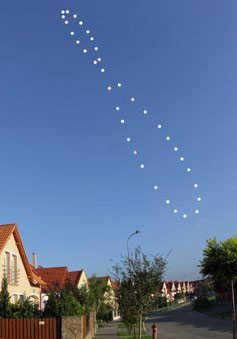

An analemma is a path that connects a series of consecutive positions of the Sun in the sky at the same time throughout the year.
Consequently, if we compare the time indicated by a sundial throughout the year to UTC, we will notice a discrepancy between the sundial and the actual time. This discrepancy is known as the “Equation of Time”.
The Equation of Time is utilized in aeronautical astronomy to estimate the hour angle of the true Sun based on a clock reading in mean time. This is particularly useful in situations where astronomical data is not accessible.
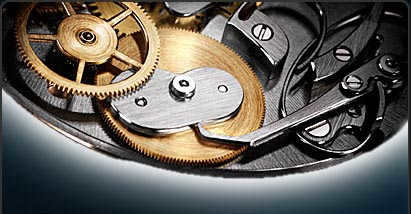
The mechanism for calculating the equation of time is used in some modern wristwatches. This mechanism displays the difference between the exact time and solar time. The equation of time states that this difference is typically within +/- 16 minutes. To represent this, most watches have a sector with a scale calibrated within these limits.
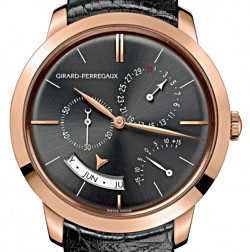

A timepiece with a feature that shows the equation of time.
Typically, incorporating the mechanism to display the equation of time is not complex. However, it needs to be linked to the mechanism that shows the name of the month. Hence, a watch that displays the equation of time often includes a month indicator as well.
Currently, it is challenging to justify the practical usefulness of this function in wristwatches. It is more likely a homage to the history of navigation and the science of time measurement.
Time in the Field of Astronomy
Time has held significant significance throughout the course of human history. In the realm of astronomy, time plays a crucial and captivating role. It serves as a measure of duration for various celestial actions and holds the power to evaluate life itself. Just imagine, if time were non-existent, how would we go about defining the phenomena that surround us?
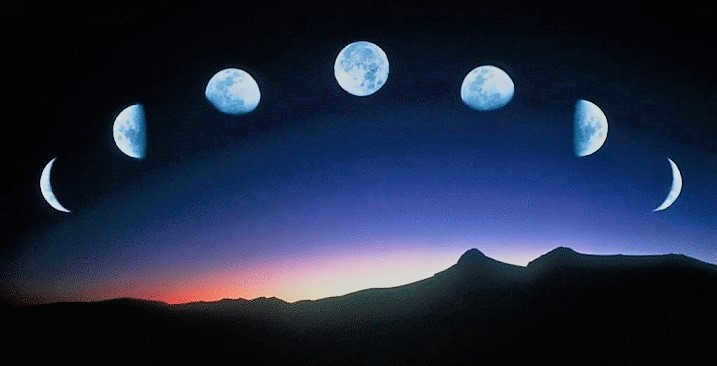
The Earth’s 24-hour cycle.
Julian dates.
Astronomers have adopted a unique numbering system for days. This system includes a 28-year cycle where all days and weeks repeat.
This method of measuring time was created by John Herschel in 1849. The counting of time starts at noon on April 1st, 4713 BC. It was Joseph Scaliger who suggested using this method, and he named it Julian after his father Julius.
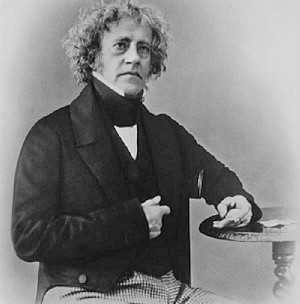

John Herschel
“The universe and time are boundless. Therefore, every event is bound to happen, even the seemingly impossible.”
from the movie Route 60.
Stellar time in the field of astronomy
A sidereal day corresponds to the interval between two consecutive peaks.
In the realm of astronomy, this type of time can be defined as the hour angle of the vernal equinox point. Furthermore, sidereal time is calculated based on this point.
Stellar days represent the duration of the Earth’s rotation around its axis. They are divided into hours, minutes, and seconds. One year contains one extra stellar day compared to the average solar year.
As we can observe, the sidereal day is shorter than the average solar day. The established difference amounts to 3 minutes and 56 seconds.
Furthermore, the duration of Earth’s orbit to reach the vernal equinox remains constant. Consequently, the length of a day remains consistent.
Astronomical Solar Time
Sidereal time is a useful concept in astronomy, but it does not apply to everyday human life. As a result, solar time was established as a means of measuring time. This type of time is determined by the Sun’s hour angle.
The calculation of solar time is based on the interval between two consecutive culminations of the Sun. The distinction between noon and midnight depends on whether these culminations are upper or lower.
True and average solar time in astronomy
Solar time can be classified as either true or average, depending on the specific Sun it is determined by.
The true solar day represents the Earth’s rotation relative to the Sun. This day begins at true midnight, which corresponds to the Sun’s lower culmination.
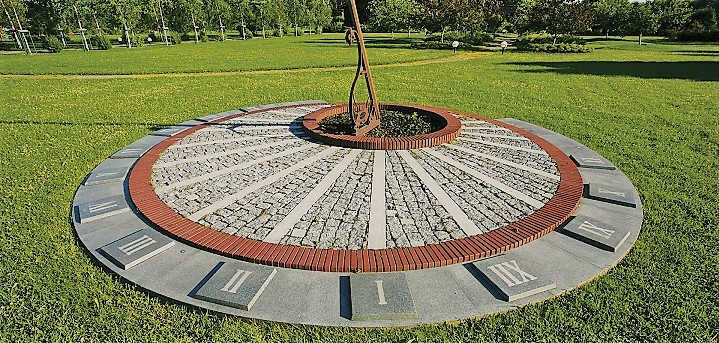
Solar hours
The movement of the Sun is not consistent. Consequently, the duration of a solar day on December 22 is approximately one minute longer than on September 23. However, this lack of precision is inconvenient for calculations.
In our daily lives, a day consists of 24 hours. Typically, everything is measured in seconds. Additionally, individuals differentiate between morning, afternoon, evening, and night to determine the time. This differentiation primarily depends on the Sun’s position relative to a specific meridian.
Nonetheless, the average solar day is utilized to accurately determine the time. It represents the duration between two successive culminations of the mean equatorial Sun on the same meridian. It is more appropriate to state that the mean solar day corresponds to the average of the true solar day.
The average speed of the Sun as it moves along the ecliptic is dimensionally constant. This convergence occurs approximately on January 3 and July 4.
Similarly, the equatorial Sun maintains a uniform path, coinciding with the ecliptic Sun at the vernal equinox. The mean equatorial sun remains constant and uniform with respect to true solar time.
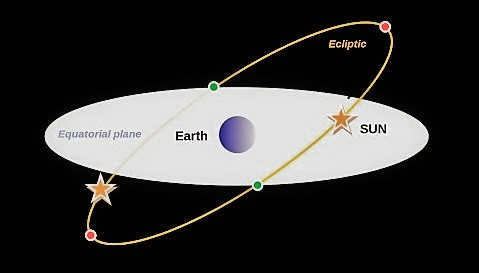

Ecliptic
Belt time
Generally, it is primarily used in geography.
From our knowledge in school, we understand that the Earth is divided into meridians. In total, there are 24 meridians and they are 15 degrees of longitude apart from each other.
It is customary to consider the main meridian, which has zero longitude, as the prime meridian. It is also known as the world meridian.
The meridians stretch from west to east.
Time in neighboring zones varies by one hour. To calculate the time in a specific zone, you need to know the zone number.
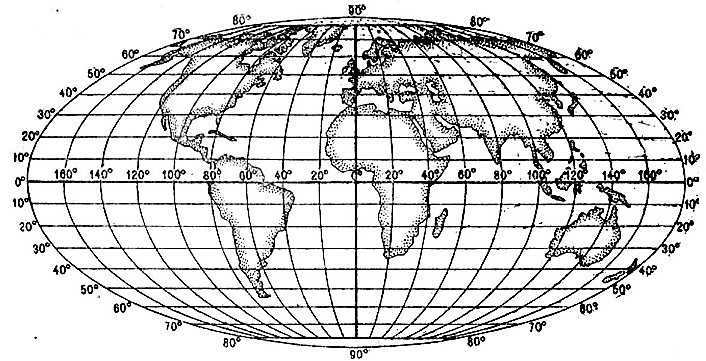

Meridians
The concept of zone time refers to the time of the specific time zone. It is widely accepted that a day consists of 24 hours and starts at midnight.
Diapasonal time
For instance, Russia is divided into 9 time zones. In 1930, the concept of decree time was introduced, which added one hour to each time zone.

World time zones
Moscow time is also known as standard time.
This definition of time implies the utilization of the time from the adjacent zone. In simpler terms, standard time is zone time plus one hour.
According to the new concepts, it is referred to as local time.
Transient time
This is a time measurement that defines seconds. The calculation of such time is independent of the Earth’s rotation speed.
Moreover, it serves as the fundamental unit of time. This concept was introduced by J.M. Clemens in 1952.
Ephemeris time remains constant and is used primarily for ease of calculation.
“Take away an hour of time from a man, take away a man’s life – a difference in scale”
Frank Herbert
As evident, time represents the length of something. We have to acknowledge that it is the most distinctive length and size that humans have defined. Aside from all else, numerous methods have been developed to compute it.


Temporal
Unquestionably, temporal signifies a great deal to humanity. Being one of the primary constituents of their existence.
What the future has in store for us will be revealed by the passage of time.
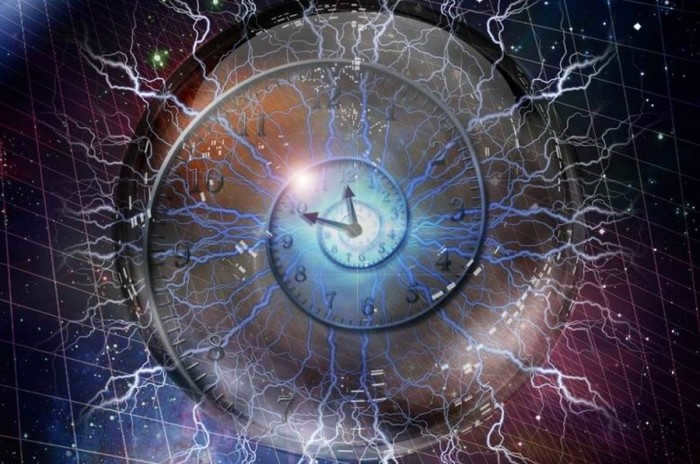
From the author: What is the direction of time in a metropolis compared to places of Power? Can we halt our internal clocks?
In places of Power, the concept of time is different from our conventional understanding. Time encompasses three dimensions: biological, astronomical, and psychological. Each dimension of time is defined uniquely. Let’s delve deeper into the characteristics of each time dimension:
Astrological time
Soon, Postumus, your friend who loves addition, will settle his long-standing debt to subtraction. I. Brodsky. Correspondence with a Roman friend Astronomical time is like a universal chronograph that inexorably measures precise time. Astronomical time is objective as it is, but it also has its own calibration – the unit of time is the second, which is 1/86400th of a solar day, meaning that the rotation of the Earth serves as the basis for calculating reference time. However, the interesting thing is that we do not perceive the Earth’s rotation in any way; on the contrary, in our consciousness, there is nothing more reliable and immovable than the ground beneath our feet. And when a real misfortune befalls us, it is then that we feel that “the ground is slipping away from under our feet” – as a metaphor for losing a reliable support in life and descending into the abyss. Seconds and minutes pass differently for each individual; for instance, “lovers do not keep track of time,” and that is why humanity has invented various types of chronographs, i.e. devices for objectively measuring time. In the 1960s, a quantum generator was created, followed by a molecular chronometer, and the transition to the atomic method of calculating the reference unit. Thanks to this, the accuracy of the reference second became extremely high – the error became no more than one billionth of a percent. However, what is a billionth of a percent on the scale of human life? Recently, I visited a relic grove of Colchis boxwood in the Caucasian mountains, a biological species that is 15 million years old. And although for an unintelligent boxwood, one human life is less than an instant, it does not negate the fact that the boxwood is dying out, while the human race is multiplying and flourishing. Many people dislike calendars and clocks because, as M. Zhvanetsky said, they “remind us of how much has passed in order to determine how much is left through subtraction.” In other words, objective, astronomical time lacks a human aspect because it is more of a reminder of our mortality (memento mori) than a celebration of life. However, since astronomical time is based on the rotation of our planet and the changing of seasons, the objective cyclicality of life is its main mystical secret, upon which all ancient solar cults are founded. I mean, the realization that spring always returns was such a profound revelation for humanity that all religious rituals of various faiths are based on the calendar as an objective measure of time. And even in the modern world, any alteration of the church calendar is seen as an unacceptable sacrilege. In this sense, objective time is the primary divine manifestation – relentless and incomprehensible, yet objectively presented to us not only through our senses but also through the most accurate instruments.
Psychological time
- this represents the present moment and this represents a fantasy;
- this represents the recent past and this represents a distant memory;
- this feels like it’s taking forever and this feels like it’s too short to fully experience;
- let’s expedite this process and let’s extend this feeling, etc.
Our perception of time varies greatly; it is thick and fluid, expanding and flowing. However, within this temporal dimension, a social comparison acts as a benchmark. One of the many categories for comparison is the spectrum of “trendy/modern – old-fashioned/outdated.” This spectrum is used to label not only the age of others, but also our own. In bustling cities, the intermingling and multidirectionality of time cycles among large groups of people create a sense of entropy, or the chaotic decay of time. As an observer, you unwittingly become a part of this entropic process.
Methods for Time Management
Time is behind us, time is ahead of us, and time is not within our grasp.
There are several recognized strategies for dealing with the elusiveness of time:
Attempting to chase after a departing train. Trying to catch up with time that has slipped away – taking care of one’s health, emulating youthful mental impulses, and striving to appear younger in every possible way. However, it must be admitted that no one has ever successfully caught up with time, and these attempts often result in a pitiful spectacle.
Calculating the Remaining Time. Once individuals come to the realization that their youth has vanished and that diseases and the physical and moral effects of aging are looming, some individuals begin to anxiously assess how much time they have left. They strive to make the most of the remaining resource, feverishly seeking out life’s pleasures with the mentality of “before I end up in a coffin.” However, the predicament lies in the fact that no one is aware of the exact amount of time they have left or how long their inner vitality will endure. Nearly everyone is familiar with the concept of emotional exhaustion resulting from unrestrained indulgence in pleasures.
Many individuals believe that the more occasions you can incorporate into the remainder of your life, the more completely you will experience it. However, the key lies not in the quantity of events or even in their quality, but in your ability to expand and elongate your time resource, to decelerate time. The slower your psychological time flows, the longer you truly live your life.
Halting the internal clock. One of the manifestations of sensing the stream of life is the perception of stopping the internal clock. When we are deeply engrossed in something, when we are in a state of flow – we experience a sensation of time vanishing. It is a wonderful feeling. Serenity comes when you comprehend that you have Eternity behind you and Eternity ahead of you. In order to halt your internal clock – you need to do the following:
- Abstain from setting objectives for yourself, solely focus on Dreams.
- Instead of planning time, adapt to the changing circumstances and be realistic.
- Focus on the age of your soul, which is always youthful, rather than counting your passport age.
- Take care of your body and strive to make it last as long as possible.
- Make inner peace a priority, regardless of external events.
- Avoid comparing yourself to others and instead focus on comparing yourself to who you were yesterday.
- Maximize your potential by living in the present moment and realizing yourself.
- Create your own personal cosmos within the larger world.
In ancient myths, there exists a concept known as the World’s Axis. This is the location around which the entire Universe revolves, where all events take place. It is also referred to as the World’s Center or even the Earth’s Navel. Various myths have assigned different locations as the World’s Axis. What is important to understand is that these places exist and time flows differently in them: the further away from the World’s Axis, the faster time moves, and the closer to the Center, the slower it becomes.
Your personal Power Spot is the Axis of your own personal Cosmos. It is the place around which the events of your life revolve. Here, the Past, Present, and Future merge into a single chronotope. It is effortless to transition between different time states, which is why the Power Spot is the perfect place to chart your Destiny.
At your Place of Power, you have the opportunity to discover your true inner Potential by boosting your energy levels. This process can sometimes push you to your limits, but it is only in this place that you can truly understand the extent of your inner Power and what you are truly capable of.
When you find yourself in your Place of Power, all the social achievements and comparisons that weigh on your mind vanish, much like a crust or old wounds. As you see yourself as a small physical being in the presence of vast mountains, oceans, and the cyclical nature surrounding you, you come to realize that the only dimension that truly matters is your inner dimension. It is at this point that you understand that you are only just beginning to live authentically, as it is only here that you exist in the present, in eternal time.
When you come and go from your Place of Power, you undergo a significant amount of excess, which effectively enhances your potential for life. It’s similar to “training” a battery, ensuring that it operates at its maximum capability – you must frequently reset it and then recharge it over and over.

